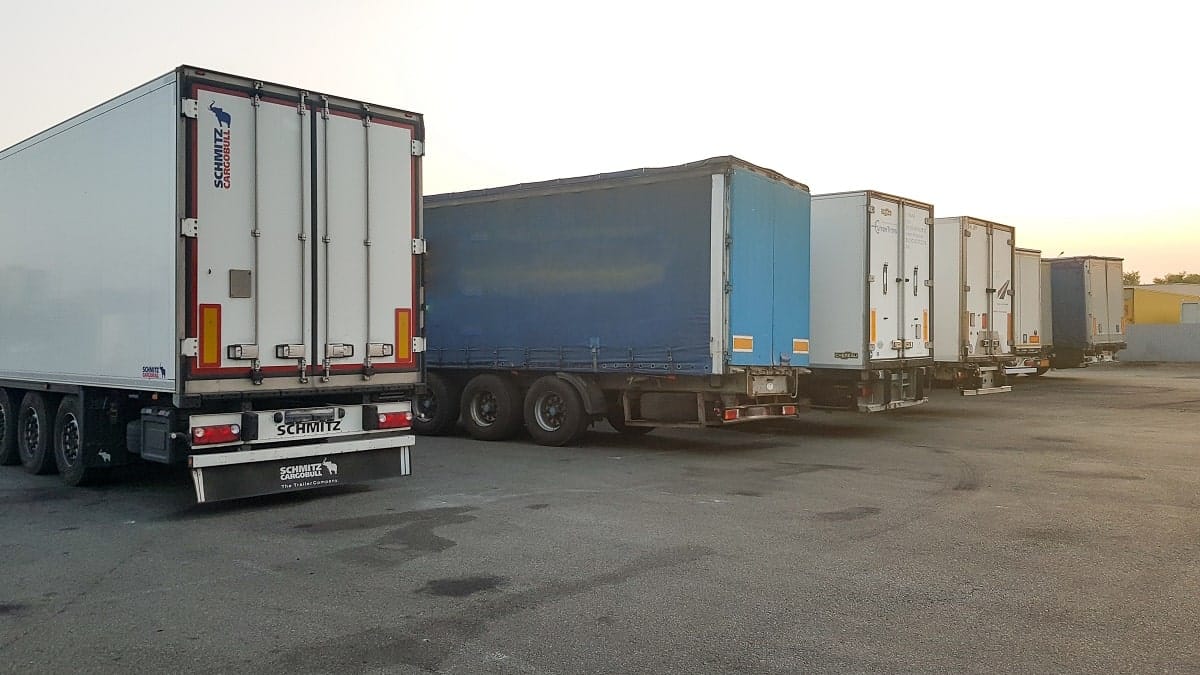Did you know that fleet capital and repair significantly increase fleet expenses more than administration and license procuring? Do you need help managing a fleet of small and large vehicles? Are you struggling to find your way through exorbitant bills because of the sudden repairs and replacements? Then it’s time you invest in fleet maintenance management. It will lower your maintenance cost and bring down the fleet expenses. We have you covered if you are getting started with fleet maintenance or need help with how to proceed. This blog will help all fleet managers and business owners looking for ways to reduce fleet maintenance costs.
Aside from ways to reduce fleet maintenance costs, in this blog, we will cover the following:
What constitutes fleet maintenance?
Why is fleet maintenance essential?
What is fleet maintenance cost?
What are the types of fleet maintenance cost?
What mistakes leads to increased fleet management cost?
What are the ways to reduce fleet maintenance costs?
What constitutes fleet maintenance?
Fleet maintenance involves all the processes and actions taken to ensure that the fleet runs efficiently, on time, and within the budget. It is an administrative approach used by fleet managers to keep the delivery vehicles, small or large, in such a working condition so that they can operate on the road for a longer time and work efficiently without getting damaged or breaking down.
Why is fleet maintenance essential?
Fleet vehicles must travel long distances and battle harsh climates and terrains to deliver the products while ensuring the product is not damaged. This is why it is necessary to periodically check the vehicle for any damage so it can be repaired at the right time. Businesses involved in delivering and distributing products like goods and people mobility services need consistent upkeep. Periodic fleet maintenance offers the following benefits:
More time on the road:
Periodic preventative maintenance will reduce the possibility of emergency risk. This will ensure that your fleet manager does not have to cancel or reroute any vehicle for any repairs in the middle of getting the delivery done.
With fleet maintenance in place, vehicles spend more time doing service for the business. This will make the service reliable by avoiding any unwanted delays.
Reduce Operational Cost:
Operating a vehicle goes beyond the repairs; it includes fuel and insurance. Fleet maintenance will ensure that the businesses can work efficiently and add more value to the customers.
Accidents, no matter how big or small, can involve extra costs, parts replacements, legal penalties, medical care, and an increase in insurance premiums. Periodic investment in fleet maintenance will save enormous amounts in the long run.
Low repair cost:
Repairs are a part of owning, operating, and managing a vehicle. But these minor damages requiring repair, if ignored, can result in hefty repair costs.
Periodic fleet maintenance will ensure that any issue is immediately identified and dealt with with the necessary repair work. Overlooking minor damages can turn into an expensive headache.
Increased Business Reputation:
Fleet maintenance goes beyond internal business operation, as this helps your business build and strengthen its relationship and reputation among customers.
Would you do business with a service provider that keeps delaying the delivery of your package or if the driver does not follow safety protocols? No, you wouldn’t, which is why fleet maintenance is necessary to build and increase a business’s reputation.
Enhanced Fuel Efficiency:
When a vehicle is timely maintained, it becomes fuel-efficient. Fuel is the leading expense in operating and managing a fleet business.
If the vehicle tires are periodically checked and replaced, the engine is working in good condition, and the vehicle is running smoothly, it will enhance fuel efficiency.
The greater lifespan of the vehicle:
When a vehicle is proactively maintained, the possibility of breakdowns and emergency repair decreases significantly. This ensures that the vehicle will run for a more extended period and bring profit to the business and value to the customers.
Not maintaining a vehicle properly could result in safety and maintenance issues, which, if overlooked, would only worsen over time. This will increase the repair cost and shorten the vehicle’s lifespan.
Enhanced Safety:
Fleet maintenance ensures that the vehicle is kept in such a condition that it is safe for the driver to make deliveries on time. Regularly checking different vehicle parts for any repair or replacement will ensure that your driver does not get into an accident, thus ensuring their safety. This significantly boosts driver satisfaction, as they rest assured that they are driving a safe vehicle that is not prone to any accident resulting from mechanical issues.
They must follow their region’s vehicle and road safety protocol to keep the vehicle safe. Failing to do so will result in multiple repairs and changes. This will add to the expenses and bring down the business’s reputation, and you may have to take the vehicle off the road.
What is fleet maintenance cost?
Fleet maintenance costs are associated with ensuring that the vehicle is in good shape, roadworthy, and safe for the driver to make their deliveries. Periodically investing in fleet maintenance lowers the operational cost, improves safety, increases the vehicle’s lifespan, reduces the repair cost, and ensures that the vehicle can spend more time on the road.
What are the types of fleet maintenance costs?
Various fleet maintenance costs constitute the fleet’s total cost of ownership. If overlooked, it can outweigh the purchase price. If your vehicle has a high total cost of ownership, it indicates that the vehicle is outdated or you need to switch to fleet leasing. These fleet maintenance costs are:
- Repairs: As the vehicle’s runtime on the road increases, so does the repair cost. This can be significantly reduced by scheduling periodic fleet maintenance sessions, even if no repair is required. This will increase the lifespan of your vehicle.
- Capital: There is a return on investment gap which results in the hidden cost of the fleet vehicle. Whenever you spend money on a fleet, there is always a possibility that another investment could have led to a better return. This is the ROI gap. This can be resolved by increasing the fleet size, resulting in better pricing deals with the dealership. Furthermore, maintaining a large fleet is relatively easier and cost-efficient in the long run.
- Asset Depreciation: You can not prevent vehicle depreciation, but you can always slow it down with periodic fleet maintenance, repairs, and replacements. This will offset depreciation. Similarly, you can go for vehicles with a lower depreciation rate since the rates differ for different vehicle categories.
- Compliance and licenses: They might not be part of your vehicle’s physical condition, but compliance and licenses can burn a hole in the pocket if overlooked. These include certain formalities and protocols which vary in cost by fleet and the type of vehicle.
What mistakes leads to increased fleet management cost?
Did you know poor maintenance tactics can significantly impact the company’s capacity? Yes, roughly 82% of the companies experienced unplanned downtime due to poor maintenance strategies in the last three years.
This is why it is crucial to know the mistakes that lead to increased fleet maintenance costs. These are:
Inexperienced drivers:
With the fleet industry becoming more sophisticated, it has become the need of the hour to hire a skilled and experienced driver. Still, there is a massive shortage of drivers in the United States, due to which companies are hiring less experienced drivers. This resulted in decreased fuel efficiency and increased customer dissatisfaction due to delivery issues.
Unsafe Driving:
Reckless driving is one of the leading causes of increased fleet maintenance costs. Drivers not behaving correctly on the road, accelerating without any reason, or braking excessively wears down the parts of the vehicle sooner than its lifespan. As this wear and tear grow over time, it increases maintenance and repair costs.
Delayed Damage Detection:
Fleet maintenance is essential because it helps identify and promptly resolve any damage issue. Late detection of damage doesn’t only cost extra money with repair or replacement but also hamper the safety of the vehicle and the drivers. Minor damage left overlooked can be severe in the long run.
What are the ways to reduce fleet maintenance costs?
Ernst and Young reported that maintenance costs contribute around 30% to 50% of the total cost of ownership. Furthermore, maintenance costs are estimated to range between 15% to 40% of the total production cost. We don’t know about you, but that sounds like a lot of money. Why spend so much when you can follow specific ways to reduce fleet maintenance costs? Here are some methods to lower maintenance costs:
GPS Fleet Tracking Software:
Numerous fleet management tools are available in the market to control maintenance costs. One of them is GPS fleet tracking software. In real-time, it updates you with the driver’s locations, safety, traffic condition, fuel usage, and delivery status. It also helps keep track of any erratic behavior from the driver’s side, like unsafe driving or unnecessary acceleration. You can use this data to fill the gap and remove any inefficiency to decrease the total cost of ownership.
Telematics System:
As mentioned above, a driver’s behavior can significantly impact the fleet maintenance cost. How a driver uses a vehicle impacts the fuel economy and the vehicle’s lifespan. You can use a telematic system that will give you the ability to track down abnormal behavior on the driver’s part, like idling or forceful braking, both of which can affect the vehicle’s wear and tear and fuel usage.
Using voice telematics will make drivers accountable for their actions, and they will correct their actions immediately. Being watched over will ensure that the driver is consciously making the commute and refraining from any undesirable practices. This will minimize the possibility of accidents, avoid wear and tear, and cut insurance premiums, resulting in reduced fleet maintenance costs.
Route Optimization:
Knowing the quickest path to delivery can help cut down on fuel expenditure and fuel maintenance costs. You can find a wide range of fleet scheduling and administration solutions that can assist in route optimization.
How this technology works to reduce fleet maintenance costs is that it will analyze various information such as traffic, weather condition, and fuel efficiency to maneuver a route through which the driver can make the delivery earlier while consuming less fuel with no roadblocks in the way.
Preventative Maintenance Plan:
Creating and following preventative maintenance plans is necessary to reduce the fleet maintenance cost.
This includes factors such as when the next maintenance is scheduled, the status of the components, when the technicians will be required, and how much shop space will be enough. This will not only improve the quality of work and enhance shop productivity but also require a cheaper cost.
Operating and managing a fleet business is a challenging feat. Fleet maintenance can be daunting, with various variables affecting fleet management costs. Fleet maintenance costs can be reduced by following the aforementioned fleet maintenance tips, ultimately reducing maintenance costs.
We hope this blog gives you a comprehensive view of the fleet maintenance cost, the associated factors, and ways you can cut down on fleet maintenance costs.
About RENTALL
RENTALL is the broadest, most adaptable, and continuously evolving rental platform on the market. No matter your company size, location, or business goals, RENTALL delivers improved operations, smart reports, increased bookings, and happy customers, all through an easy-to-use interface. Explore our solutions here, or connect with us at +1 888 628 6827 or info@rentallsoftware.com for a consultation.






























